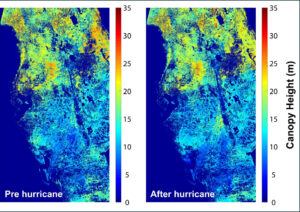After successfully battling Solar Array Drive problems over the past eight months, the Landsat 5 Flight Operations Team has transitioned the Landsat 5 satellite into operation with the solar array in a fixed position. This transition was carried out yesterday with minimum impact to the mission.
As reported by USGS, “When Landsat 5 experienced problems with the Solar Array Drive in January 2005, the secondary drive system was enabled. Erratic movement of the secondary array was observed in November 2005. The cause was likely increased friction due to lubrication depletion. The motor speed was increased so that the additional torque would overcome this friction. The solar array operated in this configuration until, on August 11, 2006, the array stoppage was again observed. In response to possible failure of the Drive, the Solar Array was placed in a fixed position on August 16, 2006, spacecraft ‘noon,’ to maximize the power charge to the batteries. Landsat 5 is currently collecting data over the U.S. and Alaska, and our International Cooperators will come back online as the power budget allows.”

Data Wrangling with Dana Ostrenga
Data interoperability expert Dana Ostrenga explains how government and commercial Earth observation satellites provide broader support to the scientific community when used together.





